All about potassium humate
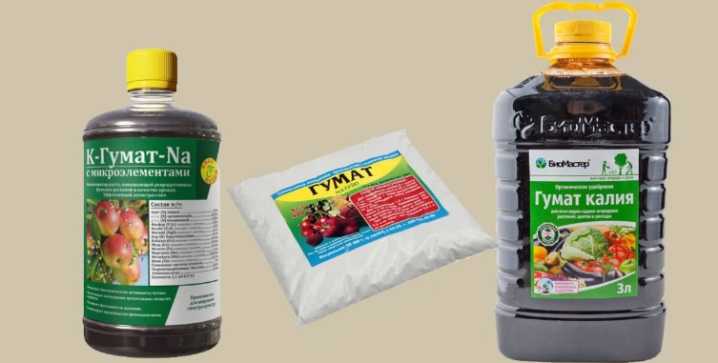
Today in stores you can find many effective products designed to care for the garden and vegetable garden. There are many good fertilizing options available to achieve high yields. These means include potassium humate. In today's article, we will get acquainted with this drug and find out what varieties it is subdivided into.
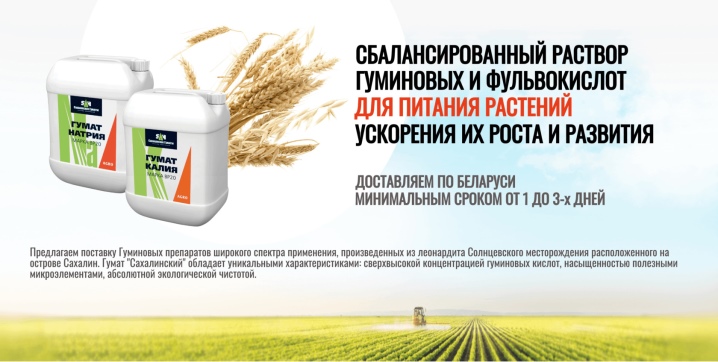
What it is?
Today, the common name "potassium humate" means a whole range of organic and organo-mineral dressings of high efficiency. The composition has a complex effect on both the soil and the planted plants.
Humates are a good fertilizer that is easy to apply and affordable. The raw material for the production of the product is manure, silt, peat, coal and various plant residues. All components are environmentally friendly and safe.
In most cases, nutrient compositions can be obtained from oxidized brown coal, because it contains up to 85% of the necessary humic substances. Fertilizers are produced ballast and ballastless.

First type is designed for productive stimulation of planting growth, strengthening existing horticultural crops. Second the same option is more related to conventional feeding. The functions of humic preparations do not end there.
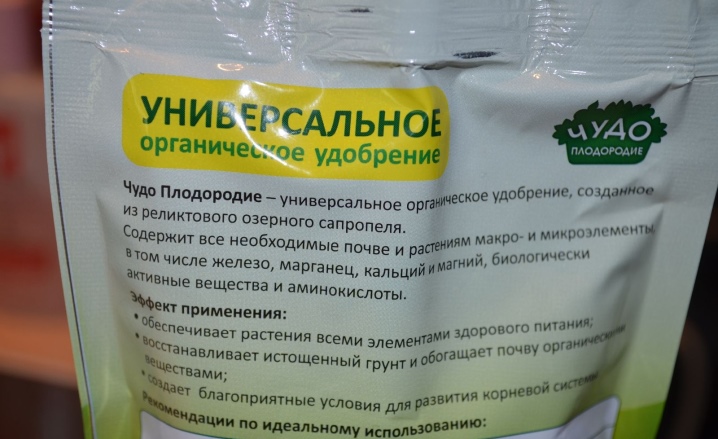
Composition
Before proceeding with the use of humic fertilizers, it is recommended to understand their composition. These funds are high molecular weight compounds. They differ in a variety of chemical composition, which includes the following components:
- amino acids;
- peptides;
- hormone-like substances;
- polyphenols;
- khanons.
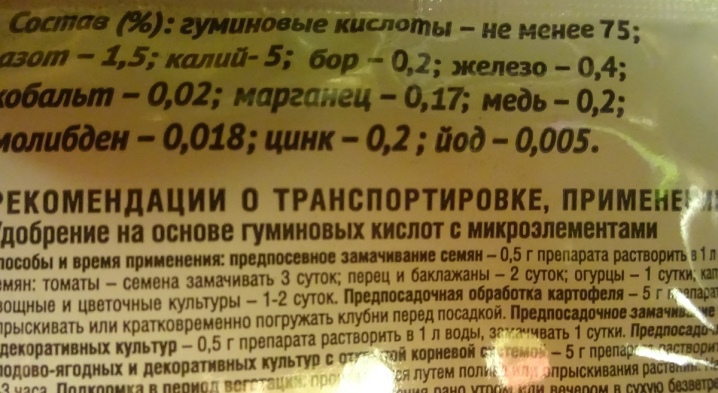
The main components that make up potassium humate are potassium and, accordingly, humic acids... The latter are complex organic substances. Their complexity is indicated by a molecular weight ranging from 500 to 2500. Proteins and carbohydrates, more than 20 amino acids, a small amount of tannins and microelements are combined in one set.
A certain part of humic acids is accounted for by lignin, fats, wax... Lignin is a special part of wood. It can be concluded that all the constituent components of humins are rotted organic matter.
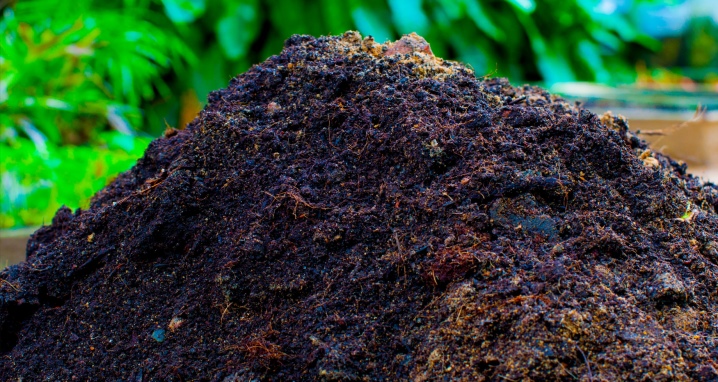
Humic acids of organic origin are distinguished by the fact that they are not characterized by solubility in water... They are not able to pass metal ions through themselves. In nature, these elements act as a kind of geochemical barriers, in the zones of deposits of which whole layers of minerals are formed.
Another element is added to the acids in the fertilizer - potassium.
It is needed to increase their solubility in liquids. Potassium is responsible for photosynthesis, promotes the formation of sugars, and is responsible for the outflow of carbohydrates from the surface cells into the interior of the plant itself. The largest percentage of the element is concentrated in the sap of trees and herbs.
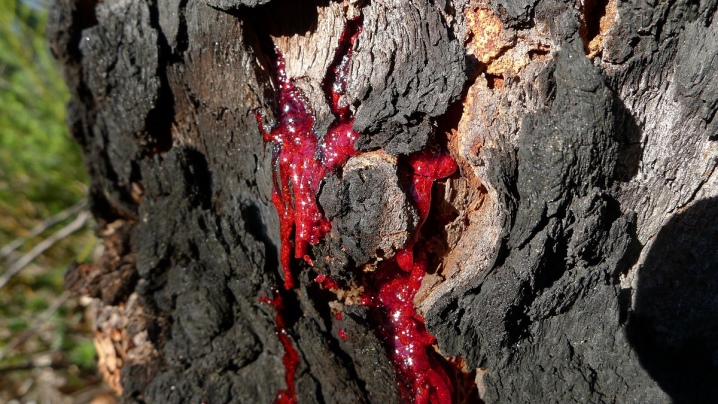
What is it used for?
Potassium humate has long been famous for its high efficiency, so many owners of their own garden estates turn to it. Let's consider what are the main purposes of this well-known and demanded drug.
- Thanks to its introduction, both the physical and chemical properties of the soil on the site are significantly improved.The nutritional functions of the earth are restored.
- Correctly applied potassium humate is able to lower the acidity of the soil, as well as enhance the effect of organic matter.
- When using potassium humate, the rate of consumption of nitrogen fertilizers is noticeably reduced (up to about 50%).
- Due to potassium humate, the effectiveness of preparations of various actions increases, namely, herbicidal, insecticidal, fungicidal. Their toxic effects are neutralized.
- The considered type of feeding contributes to the cultivation of healthy and environmentally friendly plants on the site. Improved not only the taste, but also the external characteristics of ripe fruits. This also applies to vegetables, and berry crops, and various fruits.
- Potassium humate has a beneficial effect on the plant's ability to stay healthy under adverse conditions. These include low temperatures.
- The drug effectively strengthens the root system of plants. Potassium humate is even able to restore damaged seedlings rhizomes.
- Thanks to potassium humate, the crop is more enriched with nutrients and microelements: proteins, minerals, carbohydrates.
- If you use the type of feeding in question, then in the soil and fruits it will be possible to reduce the available percentage of heavy metals and other harmful impurities, including nitrates.
- The drug strengthens the immunity of grown crops, making them less susceptible to various diseases and attacks of harmful parasites.
- The yield increases markedly already in the first year of using potassium humate.
- Potassium humate is an effective agent for stimulating seedling growth. The drug can even have a positive effect on indoor plants.
- After applying such top dressing, the crop is stored much longer and survives transportation better.

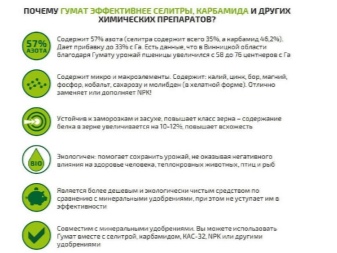
Potassium humate is often used for popular crops.
The drug shows good results if you use it for winter wheat, tomatoes, cucumbers, potatoes and other common vegetables, as well as decorative flowers, strawberries and other berry crops. Potassium humate is often used for feeding conifers.
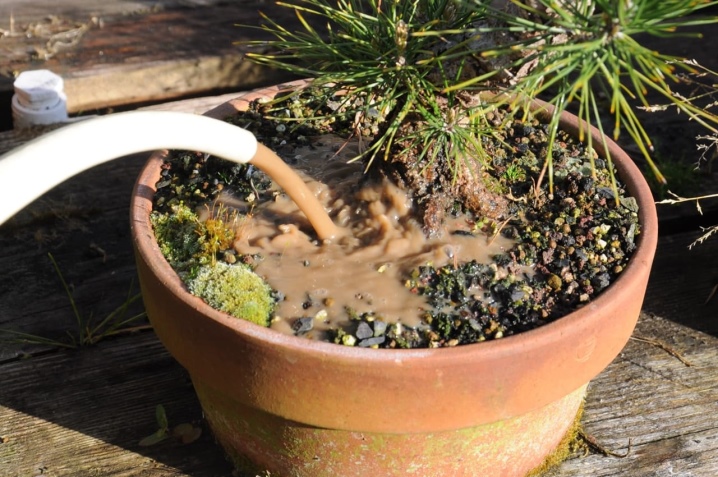
Varieties
Potassium humate subdivided into several main varieties, each of which has its own characteristics and state of aggregation. Let's take a closer look at the existing types of the considered feeding.
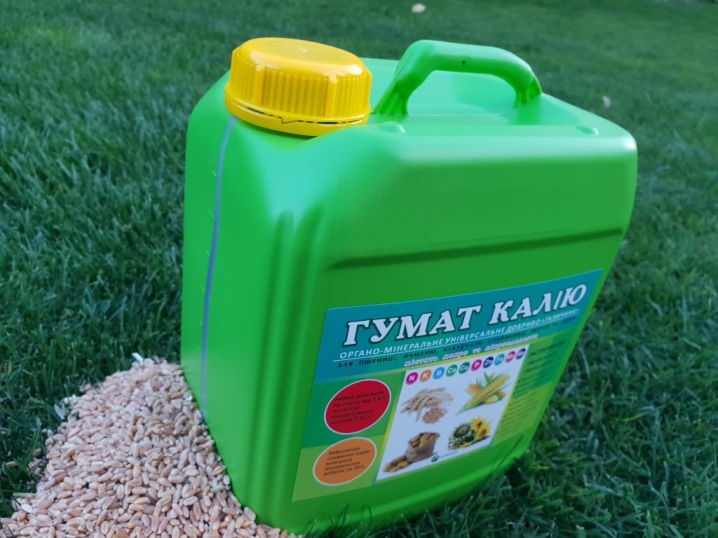
Liquid
Many gardeners habitually use only liquid potassium humate. This drug is also often used in relation to any crops in industrial plant growing. The composition is bottled in polyethylene bottles, the volume of which is 5 or 10 liters. More often, there is a container of green or brown color with similar sealed lids, in which an excess pressure relief valve is provided.
The liquid form of the drug is usually used to solve the problems below.
- For processing vegetable seeds, grain crops, flower bulbs, grape seedlings.
- A liquid preparation can be used to feed vegetables, berries, and fruit varieties during the growing season. At this time, the agent is applied under the root of the plants.
- With the help of a liquid solution, you can improve the soil and enrich it with humus.
The indicated shelf life of this drug is 2 years, but in practice it can be stored for at least 5 years.
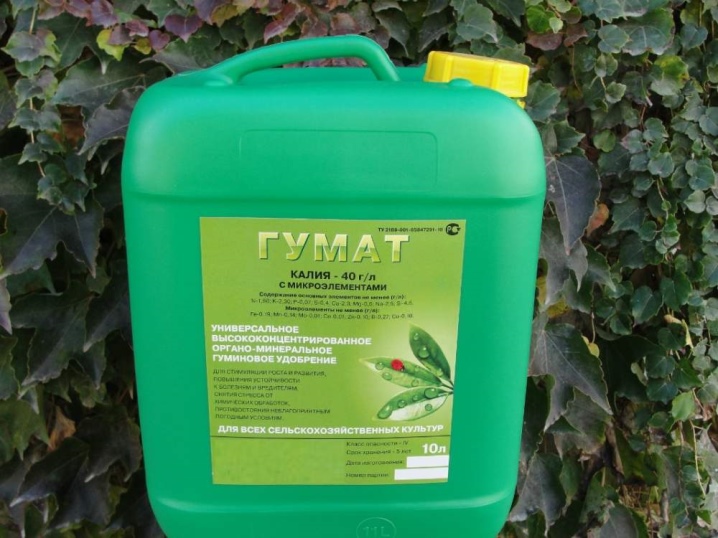
Dry
Potassium humate is also used in dry form. Preparations of this type are convenient because they can be easy to add to the soil both loose and diluted... The owners of huge agricultural lands often prefer dry formulations, since the addition of liquid fertilizer can entail a lot of problems and inconveniences.
Dry humate, penetrating into the soil, accelerates the development of the necessary microflora in it and forms good humus. In situations where the additive is required to enhance plant immunity, the powder is diluted in water.The proportional ratio of all components is always indicated in the instructions for use, which are usually applied to the packaging with the drug.
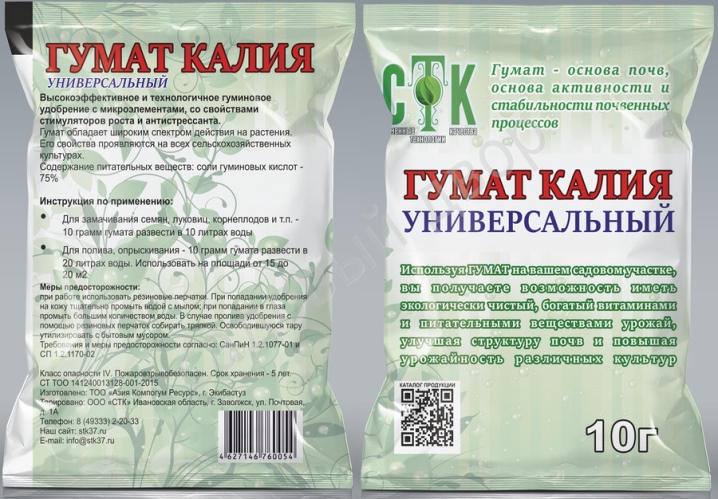
Universal
It is a concentrated chemical that contains at least 84% of humic acid salts. The powder has a characteristic dark brown or black shade. It dissolves well in water. The universal form is most convenient to use in the care of lawn grass, seasonal vegetables, flowers and indoor plants. It is required to apply the solution at the root of the listed cultures in different dosages.

Instructions for use
Potassium humate is a highly effective remedy proven over the years. It has been used for a long time, and many summer residents are well aware of the effect of the drug. For this type of fertilizer to bring fruitful results, increase yields and positively affect the condition of the soil / planting, it must be applied correctly.
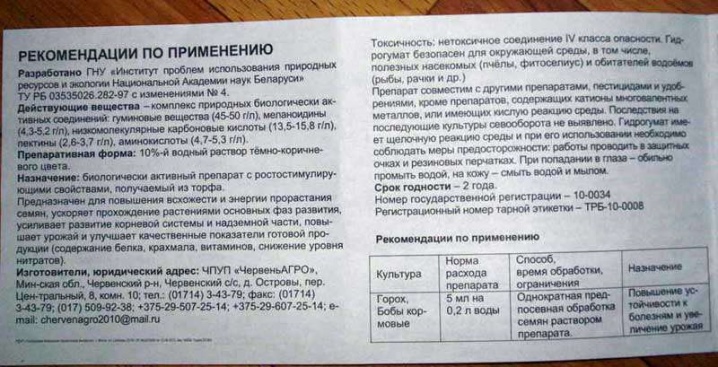
Dosage
When planning to fertilize the soil with potassium humate, it is very important to know the correct dosages in order to prepare the right solution. Let's figure out what doses of components are needed for a liquid and dry preparation.
- To soak seeds, tubers, roots, bulbs, seedlings and cuttings, it is necessary to observe the accuracy of concentration and the correct holding time. It is required to act in accordance with the recommendation printed on the package. For example, Energen Aqua dictates the following rules: 25 drops per half glass of water. As part of the tomato seeds, you need to soak for 4 hours.
- Preparations in dry form are introduced into the soil during digging or in bulk from above. The calculation is as follows: from 1 to 5 grams per 1 sq. m (maximum dosage allowed if there is contamination with pesticides, radiation or heavy metals).
A heaped teaspoon will contain about 3 g of the powder preparation. When watering, 100 liters of solution are usually spent per 10 square meters. m.
For spraying plants use 1 liter per 10 sq. m (until the sheet plates are completely wetted, it is recommended to do this from the bottom side).
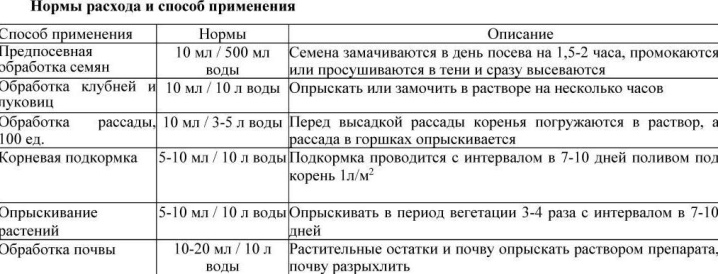
Breeding
Dilution of the desired solution is simple. It will be necessary to dilute dry matter or concentrate in liquid form in water (it can be bought ready-made at a garden store or made from paste / gel). The quality of the water and its temperature usually do not play a special role in the procedure.
Traditional watering and spraying solutions tend to have a color that resembles weak tea or beer. It is allowed to dilute the composition by eye. If the prepared solution contains suspended particles, then for spraying it will need to be filtered through cheesecloth. If this is not done, the sprayer will soon clog.
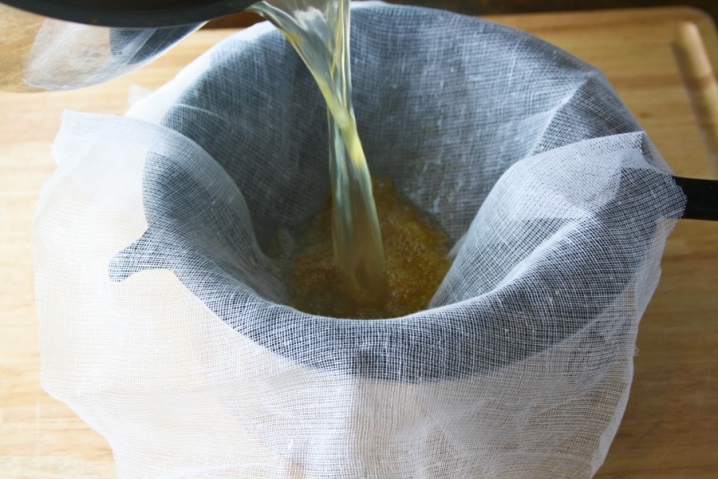
Fertilization
Consider how to correctly apply the harvested fertilizer.
- In the spring (allowed by digging or melting snow), the dry agent is added scattered over the entire area of the garden and vegetable garden. You can resort to watering individual beds with a liquid solution before sowing and planting. The operation is duplicated in the fall on soils contaminated with chemicals.
- A pile of compost is flavored with the composition several times throughout the season.
- Any seeds, tubers, roots, bulbs and seedlings should be soaked in a ready-made solution before sowing (planting on a garden bed).
- It is best to spray seedlings before the picking procedure or transplanting to a permanent location. When planting a culture, it must be watered at the root.
- Cuttings must be soaked before laying for subsequent rooting, and seedlings before planting.
- All types of cultivated plants are allowed to be watered and sprayed with a stimulating mixture several times a season, but not more often than once a week.
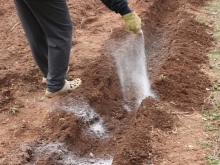
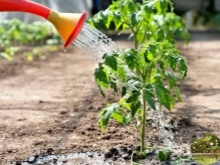
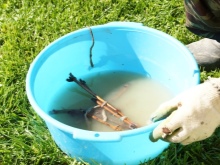
Storage and precautions
The gardener should know that humic substances are characterized by natural, natural origin, but they are not alive. They are characterized by both physical and chemical resistance. Usually drugs have a guaranteed shelf life, but it is believed that the true shelf life is not limited.
Should store the drug in conditions of any temperature indicators, but at moderate humidity... Keep liquid or powder out of direct sunlight. Make sure that access to the facility for children and animals is strictly limited.
Do not store potassium humate near food or medicine.
The considered fertilizer is classified as hazard category IV - this means that it is recognized as safe, just like peat or soil. However, people with sensitive skin are advised to wear protective gloves. It is not recommended to talk, eat or smoke during watering or spraying. The processing area must be well protected from pets and children.
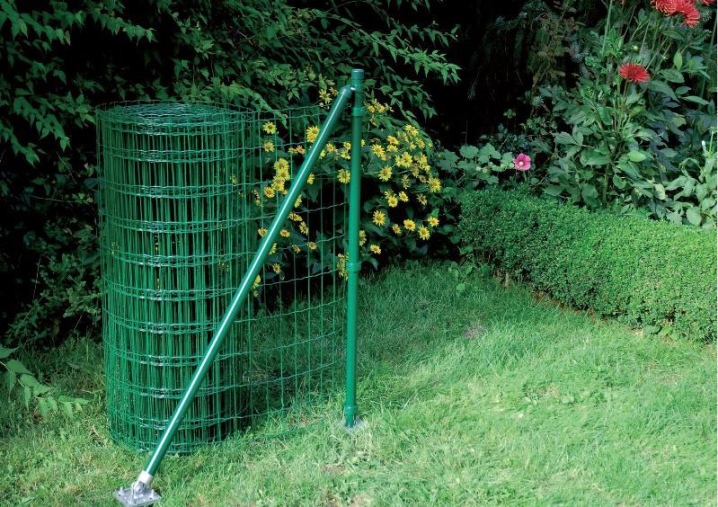
Review overview
Many summer residents resort to the introduction of potassium humate, so the drug collects a sufficient number of reviews about its effectiveness. Consider what positive aspects gardeners and gardeners have found in this tool:
- summer residents liked that humate is easily and conveniently added to the soil layer;
- pleased with the harmlessness, environmental friendliness of the drug;
- many users note the high efficiency of the use of potassium humate;
- the fertilizer has a democratic cost, which could not but please the buyers;
- preparation of the remedy seemed elementary to most summer residents.
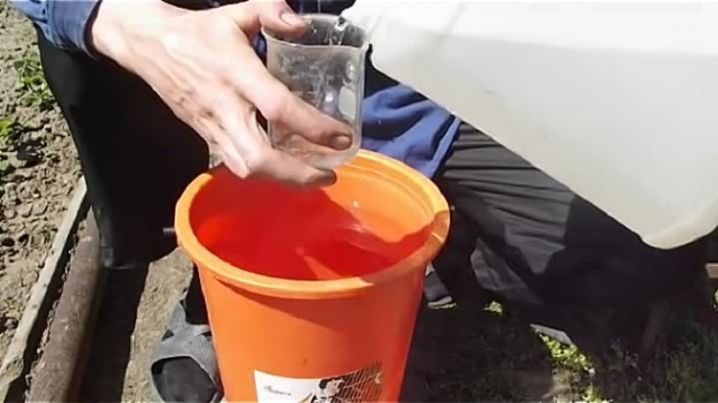
Judging by the reviews, many people have been using this type of fertilizer for many years and are not going to give it up. As for the noticed shortcomings, the following can be distinguished here:
- you have to be careful about the dosage, otherwise you can harm the plantings - some summer residents say this, who, apparently, made a mistake with the dose of the drug;
- it seemed to some gardener that potassium humate was difficult to breed.
Most users did not notice a single drawback with fertilization.
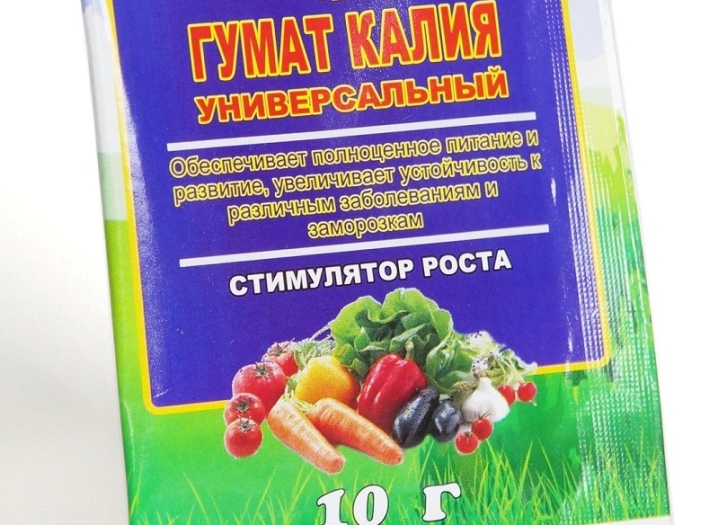
Useful Tips
Before using potassium humate, you should listen to the recommendations of specialists.
- It is recommended to purchase ready-made potassium humate in any form only in the appropriate stores where garden tools and garden / vegetable garden care products are sold.
- Even if you are confident in your knowledge and skills, it is recommended to study the instructions for use before using the fertilizer. The manual must be present on the original packaging.
- If you fertilize the soil with humates, it is not recommended to add preparations containing phosphorus at the same time. This can lead to the formation of insoluble compounds.
- A combination of potassium humate and potassium nitrate may be harmful. The minimum time you need to wait between the addition of drugs is 5 days.
- For the care of annual plants, the drug is recommended to be used before the budding period.
- It is not recommended to use sodium humate instead of potassium humate. It is cheaper, but not as useful because it contains heavy metals. The stimulant is allowed to be used not at all stages of growth and development of seedlings, but only in those periods when they do not have fruit.
- Potassium humate can be an excellent nutrient for grain crops. The product is suitable for the care of various types of wheat, rye and barley.
- A properly diluted solution can be stored in any container, but always under a lid and in a dark place. The storage of the workpiece should take no more than 1 month. If there are residues, it is better to pour them down the drain.
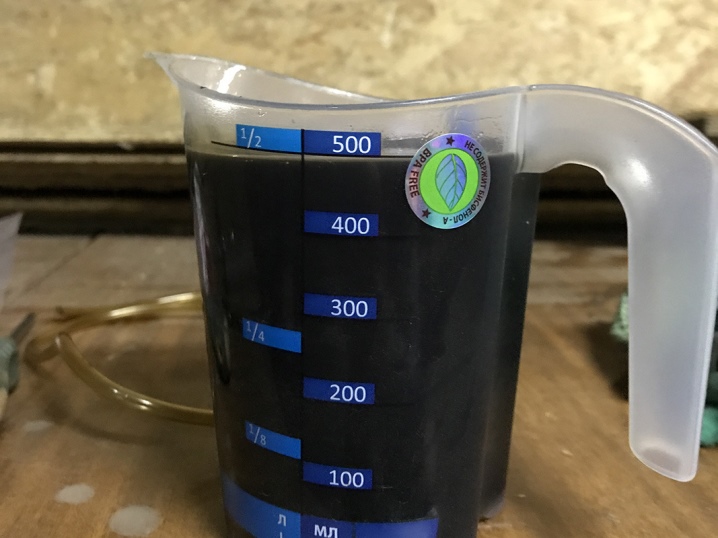
In the next video, you will learn all about the beneficial properties and characteristics of potassium humate.













Thanks. Very useful information.
The comment was sent successfully.